6 Tips for Budget Travel in Europe
The Dollarwise Grand Tour
By Volker Poelzl
Updated 12/10/2023 by Transitions Abroad
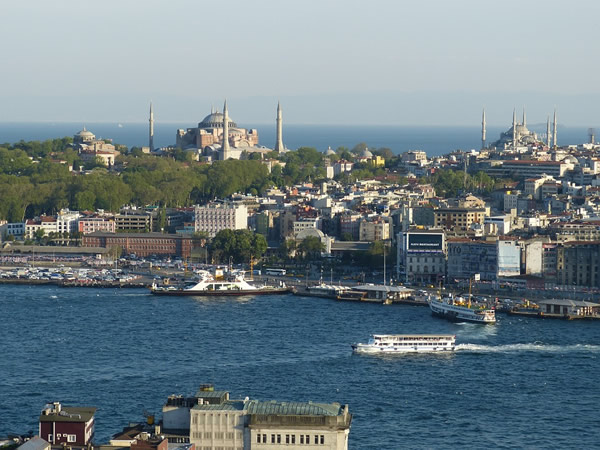
|
|
Istanbul, the gateway between the Europe and
Asia, is a great city to travel on a relative budget
if you house and eat away from very touristed spots.
|
As the dollar continues to restabilize — now about US$1.10 from a previous level of up to US$1.50+ per euro — Europe has become a bit more affordable for most travelers from the U.S. With intelligent planning and a little bit of research, it is possible to travel in Europe without spending a fortune. In addition, traveling on a budget is often more conducive to meeting the locals, immersing yourself in the rituals of their daily lives, and having a truly memorable experience — rather than taking your home with you wherever you go.
1) Where to Go in Europe
Plan your itinerary wisely. Airfares and train tickets make up a significant part of your travel expenses. You will save money and time by choosing a few select destinations instead of traveling all over Europe to see and do everything. Consider the logistics of your trip. Traveling and settling down at your destination takes a lot of time. The more places you visit, the more time you spend getting there, finding accommodations, and gaining your bearings. My experience is that travel should be more relaxing than exhausting — more of a joy than a job.
If you have two weeks, I suggest only visiting one country, or even just one region within a country, such as Tuscany, Provence, Andalusia, Burgundy, or the Cyclades islands of Greece, etc. Such a way to travel slowly allows you to gain more significant insights into the local history, culture, and customs — to experience some form of slow travel. You can always explore the similarities and differences with close neighboring regions or countries. The British Isles and Ireland are other cultural regions, as are Central Europe, Eastern Europe (often the cheapest region), and the Iberian Peninsula. France has a distinct culture very different from other European countries. Still, you could include the border regions of Belgium, Germany, and Spain as part of a trip. Part of Belgium is French-speaking, and the French provinces of Alsace and Burgundy share much of their culture and history with neighboring regions in Germany. The Basque regions in Southwestern France and Northeastern Spain share a cultural commonality. The same is the case in parts of northern Italy, which shares much of its history and cultural heritage with neighbors such as Austria, Switzerland, France, and even Croatia.
Based upon my experience traveling to Europe for many years, it is generally better to only attempt to see a little during one trip. That way, you genuinely appreciate your destination profoundly and satisfactorily and do not return to your home country exhausted by your vacation. Some enjoy counting countries visited these days as though doing so is some form of competition. However, that is generally a superficial, even disrespectful, way to experience rich cultures and vibrant people. If you reverse roles, think of your view of tourists coming to your own country and racing from destination to destination while often appearing with eyes glazed over, stressed, and exhausted. Whether descending or ascending tourist buses, following a leader carrying a sign in large groups, or even walking individually, many tourists often look the worse for wear — as though travel was a form of work. Such forms of high-speed and non-stop travel and sightseeing go against the aesthetic wisdom of the Slow Movement, founded in Europe and primarily inspired by the ideas of the Slow Food Movement that originated in Italy.
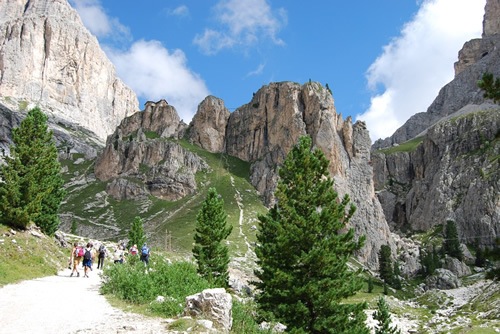
|
|
The Dolomite mountain range in Northern Italy is quite spectacular and relatively free of tourists. At the same time, vacation rentals are available for any budget.
|
Destinations in Eastern and Central Europe are often a better budget alternative. Some new members of the European Union have yet to adopt the euro, and travel in most Baltic states, Poland, Czech Republic, and Hungary is cheaper than in Western Europe. These countries have a tremendous historical and cultural heritage worth exploring.
Finally, there are some countries such as Norway, Switzerland, and Denmark in Western Europe where the cost of living is so high that even the most carefully planned trip could prove costly. You should be prepared to spend a bit more.
When it comes to costs in various cities throughout Europe, crowdsourced sites such as Numbeo can give you a glimpse of relative costs before you plan your trip if you use a common currency to compare, as can the appropriate guidebooks, blogs, and other web resources.
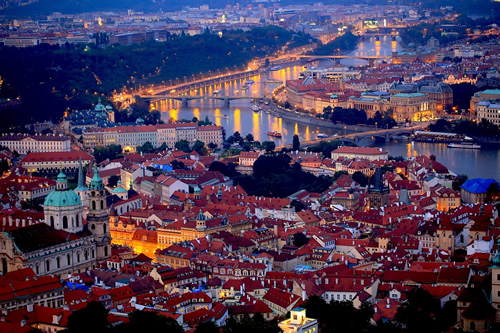
|
|
The Czech Republic (Prague pictured here at night), Poland, and Eastern Europe are generally cheaper destinations than most Western Europe, though that is also changing.
|
2) When to Go
Research on the web when your planned destination receives most of its visitors. If you travel in mid or low season, you not only save a lot of money, but you will also have a more authentic experience of the local culture and way of life since there will be few other foreign tourists. July through mid-September is the high season in Europe, no matter where you go. Easter is another popular time to travel for Europeans, as is the Christmas and New Year’s Eve holiday season. While I found Paris packed with tourists during Easter week, the French Mediterranean Island of Corsica was virtually empty since the weather was still cool and rainy in April. On another occasion, I visited Paris in February. It was cold and got dark early, but I preferred it to my first visit in August, when the city had been crammed with tourists and the Parisians had largely left town.
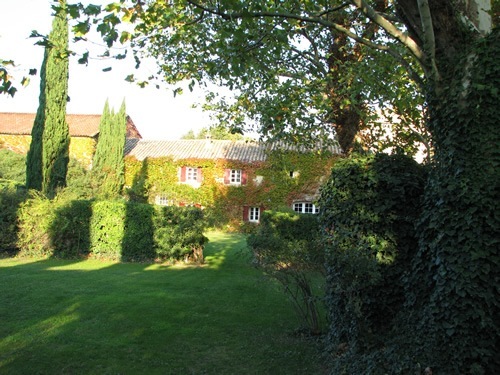
|
|
Provence, France, is still beautiful in October, and rentals of great apartments are a fraction of the high season cost, making budget travel relatively possible.
Photo © Transitions Abroad.
|
3) Getting Around
Transportation costs comprise the most significant part of your travel budget in Europe. Airfares to Europe during the summer are never cheap, no matter what airlines and websites advertise. You can significantly reduce your travel expenses by visiting fewer countries or only one country. Eurail passes are available for a single country or multiple countries, allowing you to explore a single destination or several neighboring countries. These passes are cheaper than a Eurail pass that includes all participating countries.
When planning your trip, consider several forms of transportation. Traveling in Europe by bus is a low-cost alternative to taking the train. Several bus companies connect major European cities. Ride shares are another affordable way to travel long distances for the price of sharing fuel.
If you travel with one or two other people or as a family and wish to explore the countryside, renting a car becomes a relatively affordable way of getting around. Having a vehicle — hybrids and electric are slowly becoming an option — offers you greater flexibility about where to stay and where to go. Cheap accommodations are often available on the outskirts of a city or town. By renting a car, you can stay at a bed and breakfast or vacation home rental in the countryside or at a campground outside the city limits. You can drive back into town the next day, visit other towns in the region, and have the option to alternate intense days of travel with days of relaxation. You can get off the beaten path and discover medieval towns largely undiscovered by many tourists. You will meet hospitable and curious locals in beautiful places where they do not work in the tourism industry, go to local markets, and often participate in harvest or other festivals.
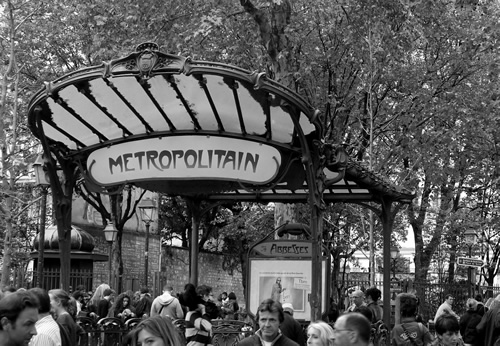
|
|
Subways in Paris and other European cities offer discounts on weekly passes or multiple rides.
|
4) Where to Stay
Apart from transportation, accommodations comprise most of your travel budget. Avoid traveling alone if you can in terms of budget. Single rooms are always more expensive per person than a double room. While many travelers prefer to book hotels beforehand, I like to select a hotel on arrival. Being more spontaneous has advantages and disadvantages. Without a reservation, you can explore several options for budget accommodations locally. Still, if you arrive at a major tourist destination in the high season, you might find the most affordable rooms booked. I traveled to Venice over New Year’s, and my girlfriend and I were surprised to find only one room in the city close to our budget. However, travel to a large city or visit Europe during the low season. You should not have a problem finding budget accommodation once you arrive. Airports and railway stations provide tourist information offices to help you find a room, or you can call a hotel listed in your travel guide or travel app.
If you plan to stay longer at one destination and don’t mind spending time on the subway or train, you might find a good deal on lodging on the outskirts of town. At one time, I spent a whole week in Paris with several friends. In this way, we could obtain a discounted weekly subway pass, and we didn’t mind that our cheap youth hostel was on the outskirts of Paris.
If you arrive at your destination by train or bus, you might find locals approaching you who offer rooms at their homes. I have followed such invitations in many places across Europe, and I have not had any problems. The rooms are usually simple but clean. Don’t always count on cable TV, telephone, or internet access. Still, these homestays are generally a great bargain compared to hotels. Rooms for rent in private residences are available in most European countries. If you drive into any town, you might see signs offering rooms for rent, which is a much more affordable option than staying at a hotel. On my most recent Europe trip, I was in a small town in northern Italy, and all the hotels were full, except one costly place. I decided instead to take another drive through town and look for signs offering rooms for rent at private homes. I found a pleasant pensione at a fraction of the price that the hotel charged, and a delicious breakfast was also included.
In large cities, I have had good experiences with small family-run hotels. They are often outmoded, but they are a great low-cost alternative to modern, sterile chain hotels you can find at home. Cheap accommodations are not easy to find at major tourist attractions in Europe. Still, youth hostels are an attractive low-cost option for lodging. Some hostels are part of the International Youth Hostel association, and you must be a member to stay there. Regardless, there are many independent hostels where anyone is welcome to stay. In the summer, booking in advance or arriving early in the day is a good idea. A growing number of hostels offer dorms and double rooms at reasonable rates. You can also save money on lodging by teaming up with a group of two to four travelers. You can share a room, and you can afford a hotel that is beyond your budget.
Camping in Europe s rugged without a car. Most campgrounds are on the outskirts of town, so visiting the city center is lengthy. Years ago, I stayed at a campground on the outskirts of London. It could have been a more pleasant area, and it took me an hour by train to get to the city. Even in small towns, most campgrounds are beyond the town limit, making access difficult without a car. If you travel in rural areas and intend to travel slowly, consider staying at a farm for a few days or renting a house in the countryside. Farmstays and vacation rentals are very popular lodging options all across Europe. They are usually far cheaper than hotels in the long run, offering you the option to cook in your kitchen or a shared kitchen. There is nothing like sampling great local foods from a market after many days of eating at restaurants or even outdoor cafés.
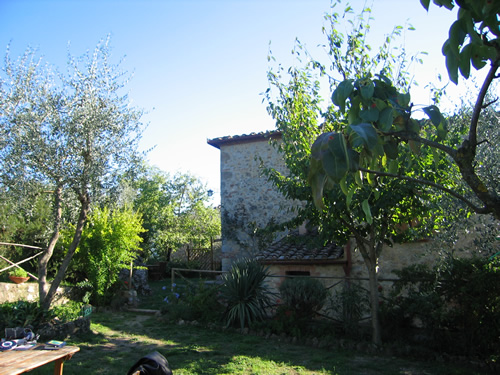
|
|
Staying in inexpensive but beautiful and rustic places like the Agriturismo Olivello in Tuscany, with a full kitchen and 2 bedrooms, brings you closer to the owners, locals, and the land while being easier on the budget.
Photo © Transitions Abroad.
|
5) Exploring your Destination on a Budget
Exploring a city is not limited to seeing major sites and museums with high entrance fees. The best way to get to know a city is to walk around, sit in a park, enjoy a coffee at an outdoor café, and observe the hustle and bustle. Walking instead of taking the subway or bus is more enjoyable, burns off more of the great food you have enjoyed, and saves you money since single subway rides in Europe’s cities are often quite expensive. If you prefer public transportation, get a multiple-ride or weekly pass — which is always cheaper than single rides. Also, keep in mind that many museums offer discounts on certain days of the week or at night, or access may even be free on certain days. In some cities, you can buy combined and multi-day tickets for major sites and attractions at a considerable discount over individual admission charges. Many cities publish free entertainment guides to learn about free activities and local cultural events. If you are a student or teacher, or under 26 years old, you can get a discount at many attractions and museums all across Europe. (All you need is an International Student Identification Card (ISIC), Teacher Discount Card (ITIC), or Youth Travel Card (IYTC), with offices all over the world.)
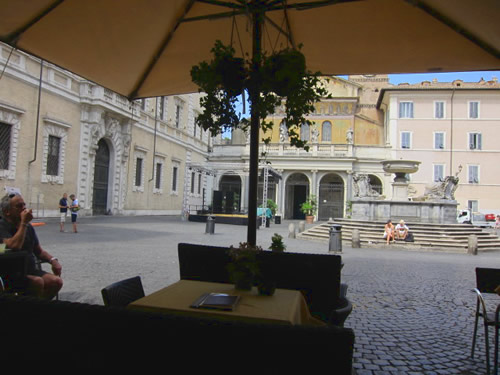
|
|
Trastevere, a neighborhood in Rome, is a great place to have a doppio cappuccino, hang out and relax. Great people-watching and street performances often go deep into the night. Photo © Transitions Abroad.
|
6) Where to Eat
Planning your meals is another great way to reduce your travel expenses. Instead of eating at an overpriced restaurant or sandwich shop near popular tourist sites that generally hike the prices and serve more generic fare, you might consider buying food at a small grocery store or market. Eating out at lunchtime is also cheaper than going to dinner since you can take advantage of lunch specials, often prix fixe, for locals. Even better, if you buy groceries and have a sandwich or picnic for lunch or dinner back in your room or picnic in a park, you can save enough to go out to a bar, café, or movie theater later at night.

|
|
For lunch or dinner, pick up a sandwich, a quiche, or some pastries at a typical pastry shop or deli in Europe for less than the average lunch at a café/restaurant and far less than the average dinner at a restaurant. Buy your favorite local beverages at a local market to go with your feast. You will eat very, very well. Photo © Transitions Abroad.
|
As you can see, budget travel in Europe is entirely possible. You have to be innovative with your money. The more you research budget travel options ahead of time, the more you can plan a trip to Europe that fits your budget and offers unique and memorable experiences with the local people. Bon voyage!
Volker Poelzl is a Living Abroad Contributing Editor for TransitionsAbroad.com. He has extensively traveled in Europe, mostly on a low budget.
|
